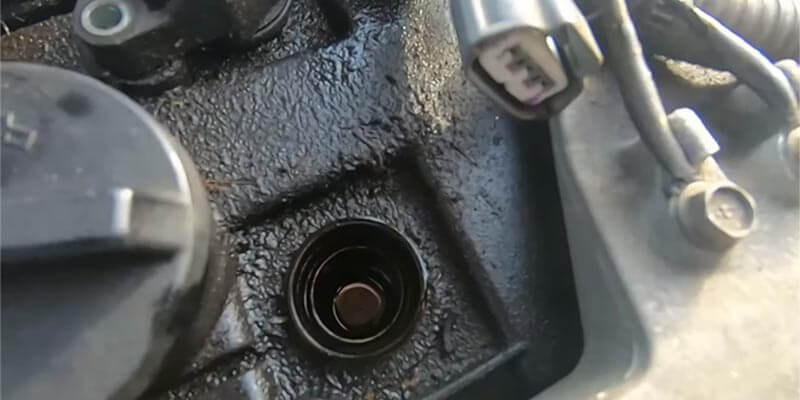You will find that some car owners will clean the spark plugs when they notice even the slightest bit of debris or oil inside the spark plug tube, which is not the best thing to do.
Therefore, it is essential to know when and how often to clean as well as how to clean. Therefore, we have made a step-by-step guide for you to follow that will teach you how to remove debris from spark plug holes along with oil dirt, and gunk.
Guide to Removing Debris from Spark Plug Hole –
Here are the tools and materials needed:
- A screwdriver
- An air gun machine
- Carbon cleanser
- A soft and clean rag
- 1 piece of sandpaper
- 1 socket wrench
- A file and gapping tool
- Safety glasses
- Wire brush
Step 1: Plug out the Negative Battery Terminal
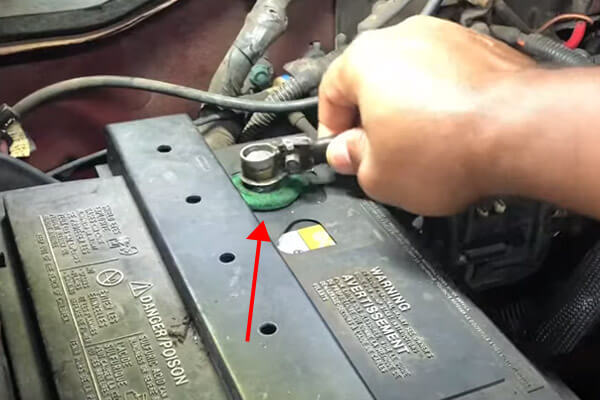
The car battery can be found in either the engine bay or the trunk. Refer to the instruction manual if you’re having difficulty locating the battery. After finding the car battery, you have to disconnect the negative terminal before you can start cleaning.
It is important to note that only plugging the negative terminal would break the circuit. Disconnecting the positive terminal will not break the circuit. Thus, you would be operating on a closed circuit which is harmful to the car.
Step 2: Locate the Spark Plugs
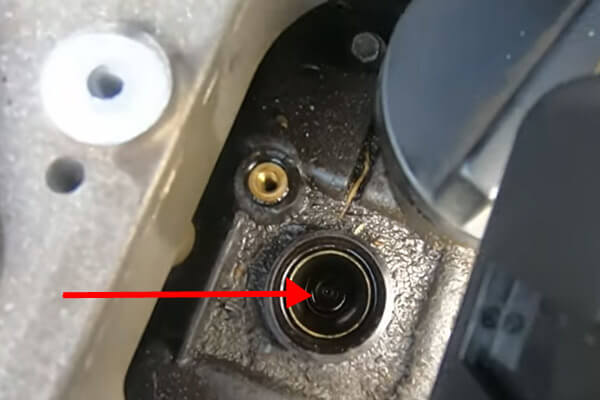
The spark plugs are connected to the ignition coil, so you’ll need to trace the wires from the ignition coils to find the spark plug tubes. Refer to the instruction manual if you’re having difficulties with finding the spark plugs.
Step 3: Clean the Dirt and Debris Around the Surface
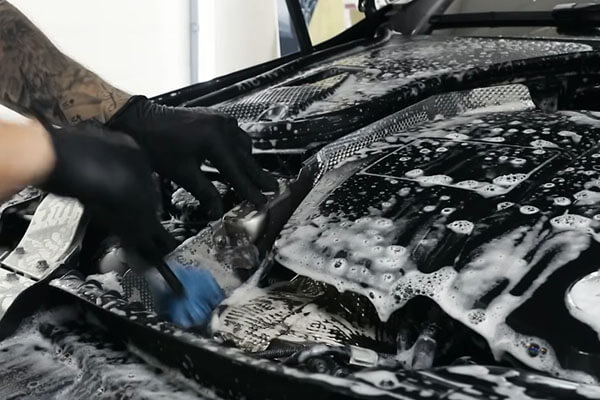
Use an air gun machine or compressed air cans to blow away the accumulated debris around the hole. You should put on safety glasses to prevent anything from getting into your eyes. Clean the gunk and dirt that has settled over the wires to prevent them from falling into the tubes.
Step 4: Plug Out the Ignition Coils One at a Time
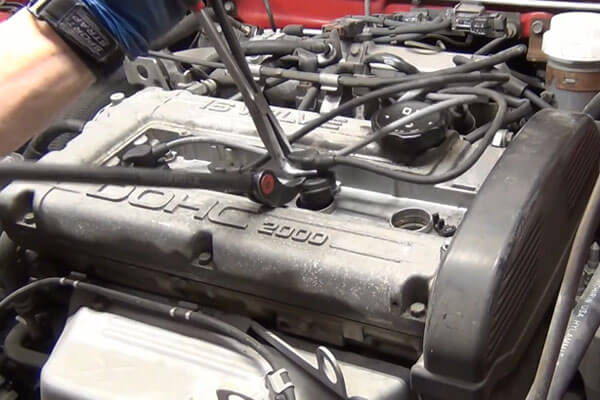
After wiping away the debris and dirt off the board:
- Proceed to remove the ignition coils.
- Do not remove them all at once, as you may have gotten confused putting the back into the cylinders.
- Try to be gentle while removing the spark plug wire. If the wires get stuck, loosen them up by rotating the coils a little bit.
Step 5: Loosen the Spark Plugs Using a Spark Plug Socket
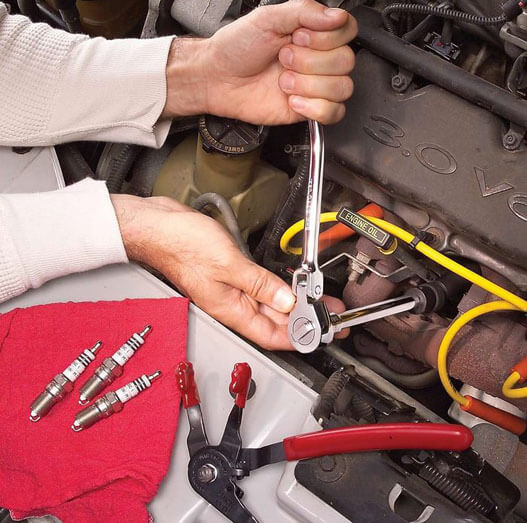
Use a socket wrench with a spark plug extension to remove the spark plug. Simply attach the extension to the wrench and put it on the spark plug. Take the wrench and turn the anti-clockwise. Keep on doing it till the spark plug breaks free. After that, unscrew each spark plug by hand and set them aside in a safe place.
Step 6: Remove Excess Debris from the Spark Plug Hole
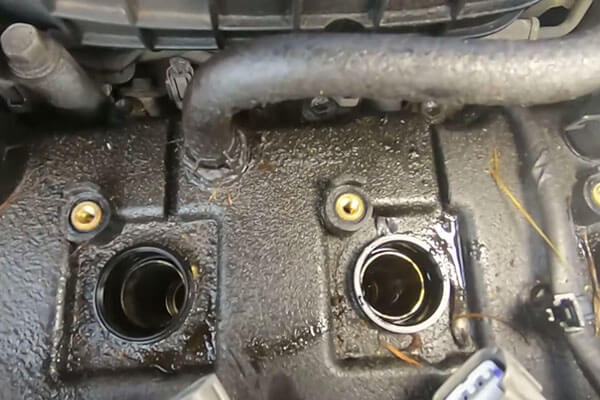
Oil or fuel can easily get into the spark hole if there is any valve gasket leakage. You can use any form of suction device to suck out the excess oil inside the cylinder. You can also spray some carb cleaner in the spark plug hole and get a screwdriver and some clean rag to dip it inside to clean the plug wells.
Spraying the spark plug hole cleaner in a clean rag works better than simply spraying it inside the plug wells. Keep a little bit of oil/fuel inside the holes as it is required for the spark to ignite.
Step 7: Clean the Spark Plug
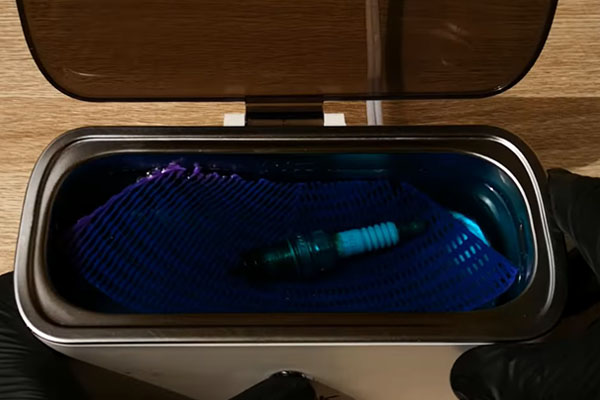
Using an air gun is the most efficient and quickest way to remove debris, loose materials, and dirt on spark plugs. If you can, get an air gun with a long tip and use it to get to the bottom or close to the bottom. Then, blow the compressed air to remove the junk or debris you find inside.
The electrode, situated on the upper part of the spark plug, is made of metal, making it prone to rusting. You can file the rusty bit off from the electrode to clean it. For filing the electrode, regular textured sandpaper will do the job quite well. A file tool can be used on the edges of the electrode where it is hard to remove the rust.
Also read: What Causes Spark Plug Electrode to Bend (List of Reasons)
Make sure to wear protective eyeglasses to prevent anything from getting into your eyes. Use a wire brush for cleaning dirt that has settled on the thread of the spark plug.
A gentle back and forth motion works best for getting rid of grime and grease on the thread. Make sure to wear protective eyeglasses to prevent anything from getting into your eyes.
Step 8: Correctly Set the Spark Plug Gap
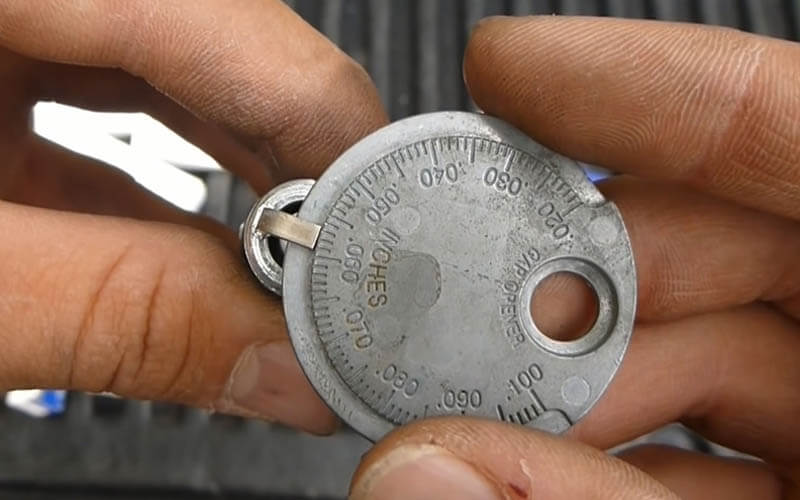
Before setting the spark plug gap, it is important to know the precise measurements for the vehicle. Usually, the gap ranges within a few millimeters.
Check whether the plug’s gap distance is accurate by using the gapping tool found in any auto parts store. Make any necessary adjustments by simply prying the electrode or pushing it with your fingers.
Step 9: Put the Spark Plug Gently Back into its Place
Now it is only a matter of doing everything in reverse. You can place the spark plug into the socket wrench and tighten it back into place, or you can simply use your hand to put the spark plug back. Do not overtighten the spark plug; otherwise, it will break.
Step 10: Reinstall the Ignition Coil
Put each of the coils back into its respective holes and ensure they are properly gripped. The coils will make a pop sound when they are properly set in place. After the coils are properly set, wipe the top with a soft towel to prevent any dust or grime from accumulating later.
Finish it off by connecting the negative terminal and completing the circuit. Make sure all the bolts are fastened tightly, as loose bolts may lead to dangerous sparks.
FAQ
You can if it is to remove hardened debris inside the well. That typically happens when you have not cleaned your spark plug in a long time. For regularly scheduled cleaning, spraying the carb cleaner on a clean rag and then dipping it inside works best.
Yes, it is important to clean the surface of the spark plug before removing it. this will prevent debris, dirt, and other loose material from getting inside the spark tubes.
Referring to the instruction manual should be your best bet. As each vehicle is made differently from the others, the cleaning period will differ. Generally, most vehicles need there are spark plugs changed wants about every 30,000 miles.
Conclusion
So that was pretty much about removing debris from spark plug. Now there are other ways too, however, the ones we’ve talked about here can get your job done within a snap. We hope you found this short guide useful.

